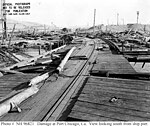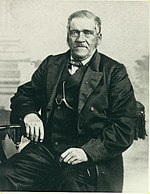Nichols, California
Contra Costa County, California geography stubsUnincorporated communities in CaliforniaUnincorporated communities in Contra Costa County, CaliforniaUse mdy dates from July 2023

Nichols is an unincorporated community in Contra Costa County, California, United States. It is on the Atchison, Topeka and Santa Fe Railroad 5.5 miles (9 km) west of Pittsburg, at an elevation of 62 feet (19 m). The place is named for William H. Nichols, president of the General Chemical Company of New York, which built in 1909 a plant here to produce fertilizer and a number of other chemicals for industrial use. In 1921, General Chemical became a division of Nichols's Allied Chemical, later Allied Corporation.
Excerpt from the Wikipedia article Nichols, California (License: CC BY-SA 3.0, Authors, Images).Nichols, California
Nichols Road,
Geographical coordinates (GPS) Address Nearby Places Show on map
Geographical coordinates (GPS)
| Latitude | Longitude |
|---|---|
| N 38.041388888889 ° | E -121.98805555556 ° |
Address
Nichols Road 684
94565
California, United States
Open on Google Maps








